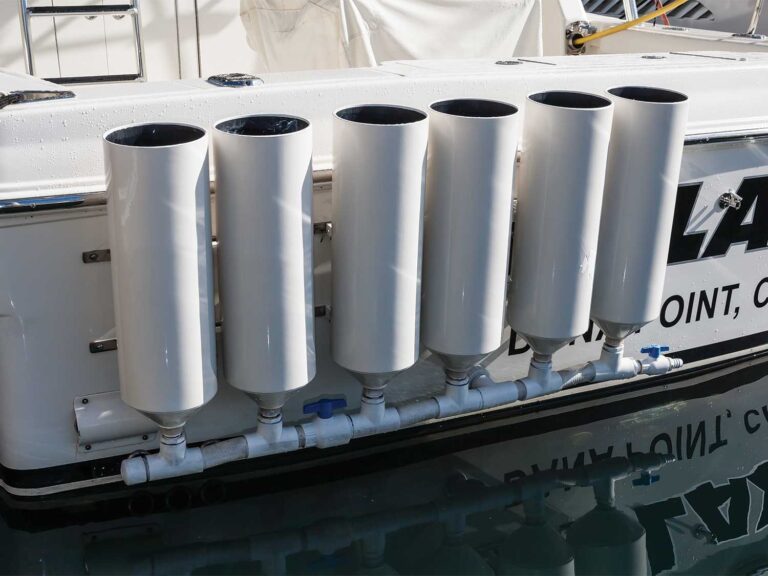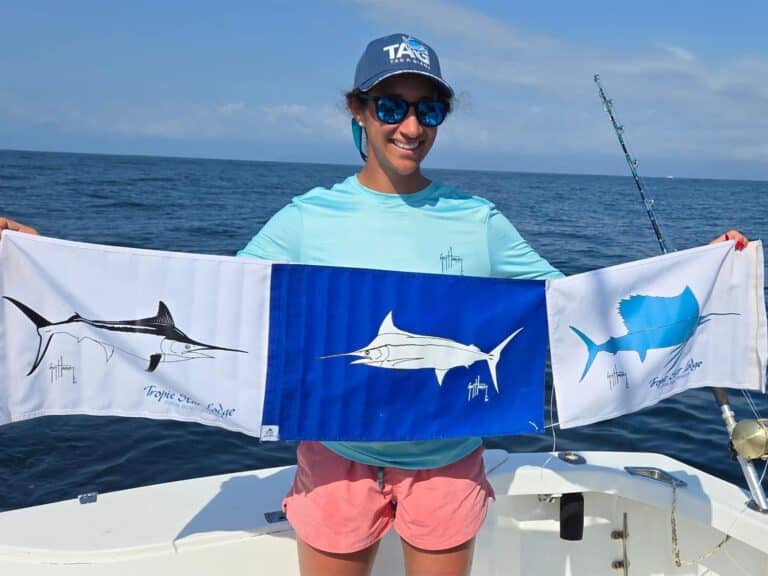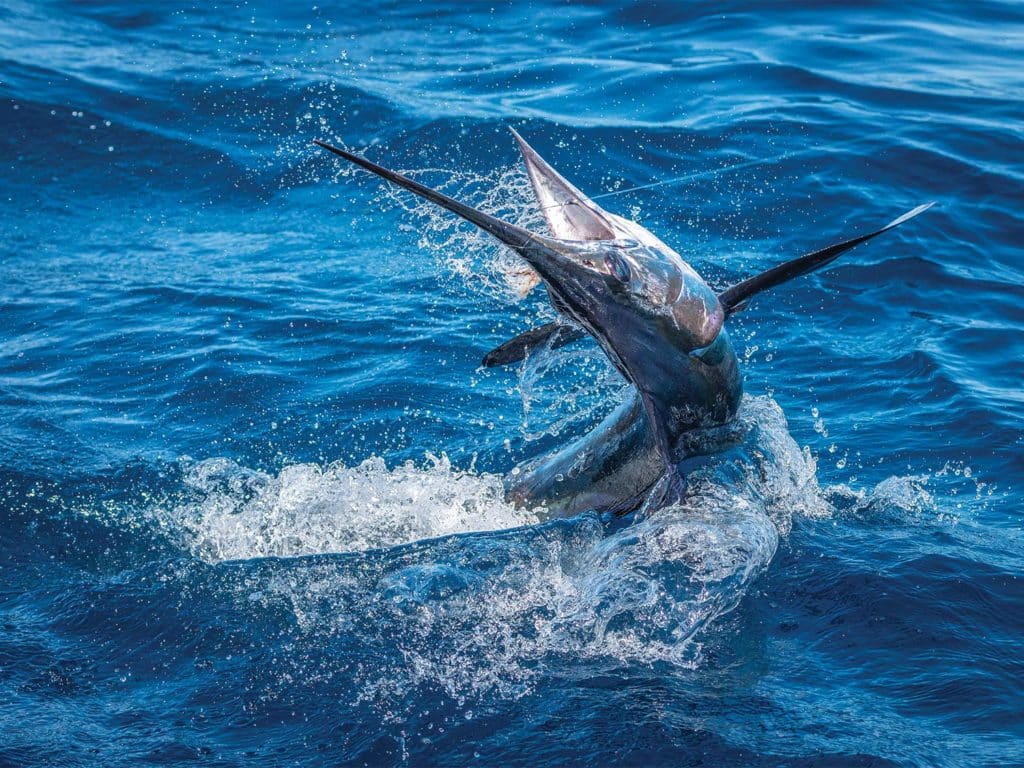
Special delivery: Sign up for the free Marlin email newsletter. Subscribe to Marlin magazine and get a year of highly collectible, keepsake editions – plus access to the digital edition and archives.
Through half-closed eyes I peer through a narrow gap in the curtains of my hotel-room window, where I can see that in the world outside, dawn has started to announce itself. After my late arrival the previous evening, it’s hard to resist the temptation to roll over and drop back off to sleep, but suddenly an unfamiliar sound snaps me fully awake. It’s the call of the muezzin summoning the Islamic faithful to observe the Fajr, the first of the five daily prayers. The man’s heavily accented voice resonates through speakers around the beautifully ornate minaret that sits on top of one of the many mosques of Mohammedia.
“Good morning, Morocco,” he seems to say. “Time to get up and go fishing.”
That there is exceptional sport fishing available in the blue water off the coast of northwestern Africa in general—and Morocco, in particular—is no great secret, but yet it remains relatively unknown compared with other destinations around the world. The current IGFA line-class records for white marlin in the men’s 2-, 4- and 6-pound-test class, as well as the women’s 6-pound-test class, are all held with fish caught off Mohammedia. The records tally for white marlin caught fly-fishing here is even more impressive, and includes the men’s 4-, 6-, 8-, 12-, 16- and 20-pound-test tippet. With just one exception, all of the fly-caught records are held by famed Moroccan fly-fisherman Fouad Sahiaoui. That single exception is the 16-pound-test-tippet fish, an impressive 104-pound, 6-ounce white that is credited to the legendary Billy Pate; and in memory of his great friend, Sahiaoui has vowed not to attempt to break this record. Further, both the 16- and 20-pound-test women’s tippet records are currently held with whites caught here, and both are credited to Pate’s wife, Jody.
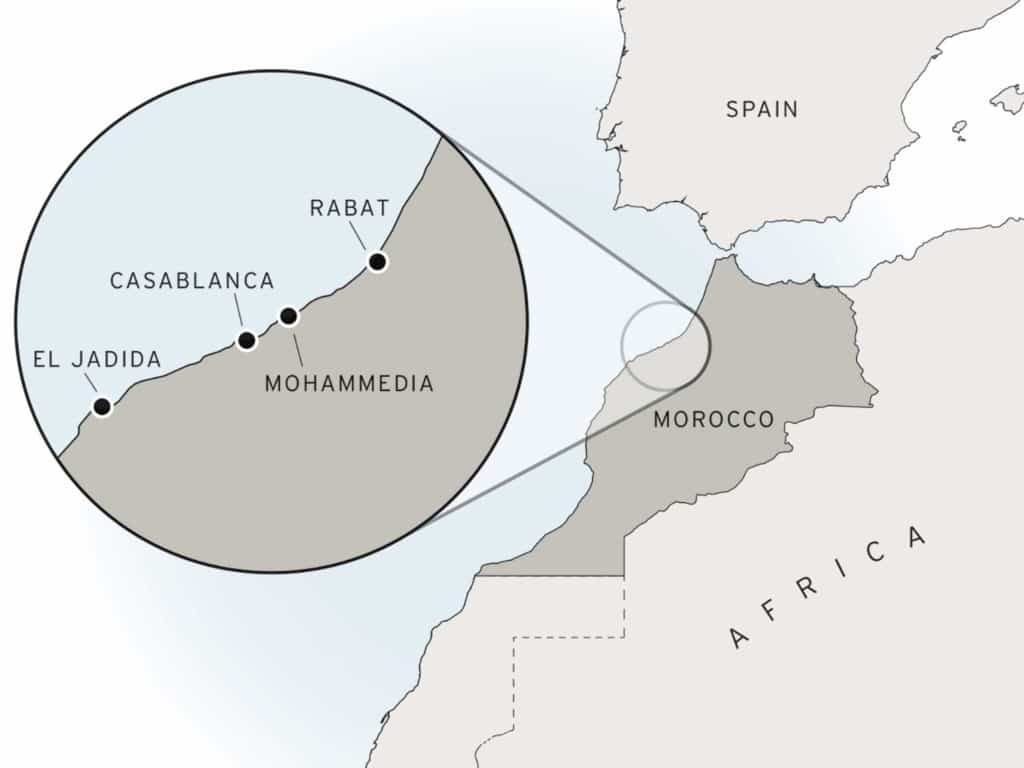
A Walk on the Wild Side
The marina at Mohammedia is not like typical docks. You can’t just wander in and stroll the boardwalk, stopping to talk with the captains and mates as you can at countless other sport-fishing establishments around the world. If you want to go fishing here, the first step is for your captain to register you at the Yacht Club Du Maroc. Next, you need to present your passport or another accepted form of identification—I used my UK driver’s license—to the security guards at the entrance to the port. This will be retained, and in return, you’ll be given a day pass, which you need to keep in order to exchange for your ID when you exit at the end of the day. This might sound like a problematic and time-consuming process, but it really isn’t. Throughout my trip, the entire procedure took just a minute or two, which I was assured was absolutely normal.
Once you pass through port security, you enter a vast industrial complex. Mohammedia is the most important oil port in the region, with the majority of the port real estate being taken over by docks occupied by large oil tankers and vast storage tanks, along with the assorted paraphernalia associated with the production and distribution of petroleum. A small corner of the main harbor has been allocated to the local fleet of commercial fishing boats, and tucked away on a couple of pontoons close by is where you’ll find the sport-fishing community.
On my first morning fishing here, we cleared the harbor breakwater and headed out into the open Atlantic, where we stopped briefly to drift alongside one of several large buoys marking the channel into the harbor. Here we jigged up live bait with sabikis, quickly filling the livewell with some mackerel that the white marlin we would be targeting find so irresistible.
I had been invited to Mohammedia by Laurent Sahyoun, with an opportunity to join him aboard his 40-foot Gamefisherman, One More, to witness for myself what I had reliably been told by several mutual friends must be one of the most consistent fishing for large white marlin anywhere. Sahyoun has fished the area all his life, and is the current holder of the men’s 6-pound white marlin record with a fish that weighed just over 116 pounds—he was a terrific resource.
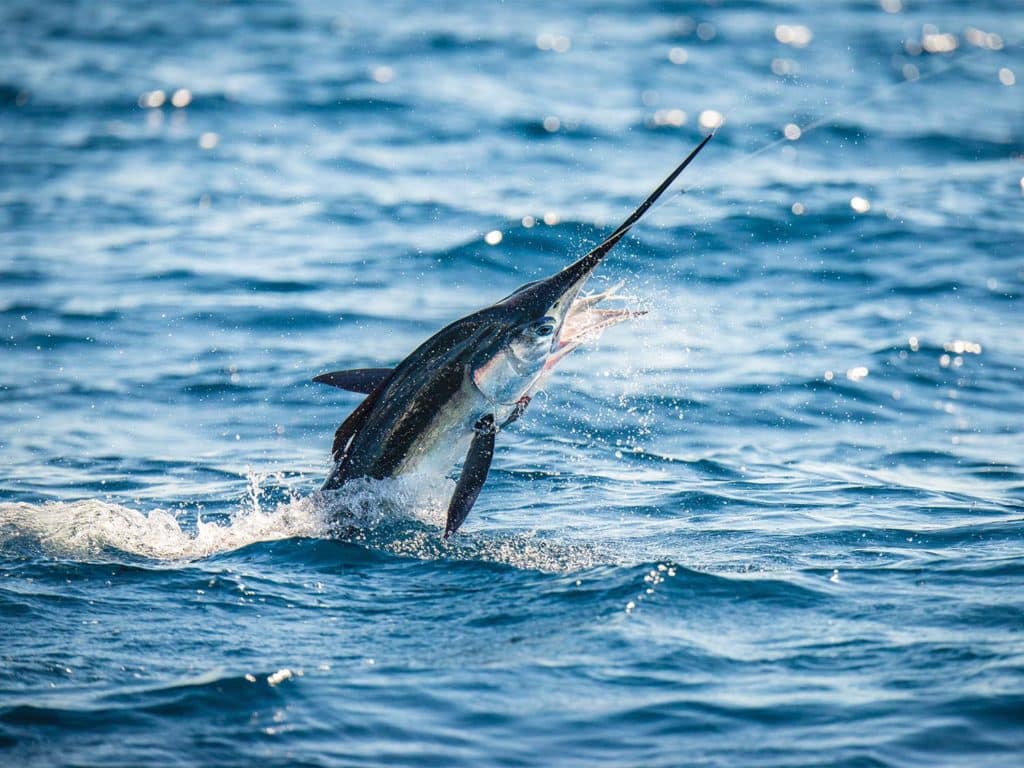
Target: White Marlin
“The first thing visiting anglers should appreciate is that, unlike many areas where billfish are caught, Mohammedia is not a mixed fishery,” Sahyoun said. “We catch a lot of white marlin, a few blues, occasionally some dorado, and that’s pretty much it. We do have another boat located farther north at Tangier, where we fish for the large bluefin tuna that run through the Gibraltar Straits.
“Our marlin season starts in July,” he continued. “The early part of the season is when we experience the most action with blues, but there’s always a chance of an early white. Prime time for whites is a relatively short period consisting of just two months: August and September. Some years, the first half of October can be productive, notably for the biggest fish, but we advise clients to visit in either August or September.
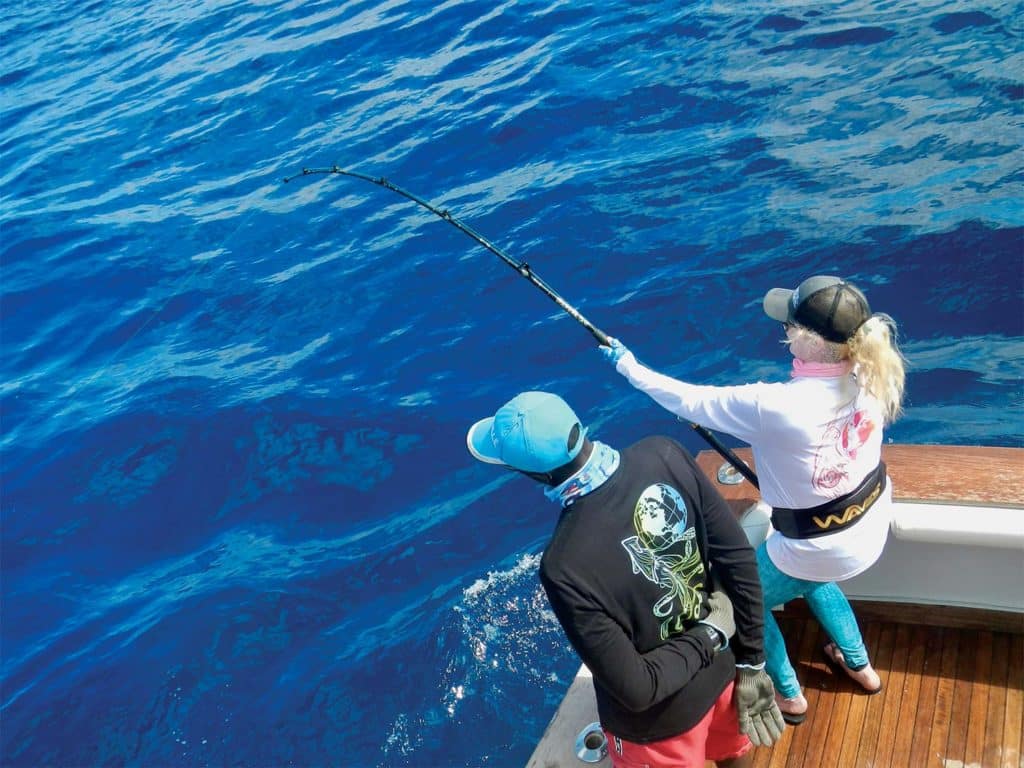
“The next big difference with our fishery is that there is no specific holding structure off the coast. We do not concentrate on fishing bait-aggregating features such as the banks, reefs and other structure that are so productive elsewhere. The seabed is mostly flat and featureless. The whites we catch are migrating along the coast, running in a southerly direction from Portugal. When they leave us, nobody really knows exactly where they go.”
I visited the first week of September and had been greeted by the welcome news that the fishing throughout the previous week had been very good. “During our last six days fishing, we released 52 whites averaging 60 to more than 100 pounds,” said Marco Canu, our Italian captain. Canu generally runs Sahyoun’s second boat based at Mohammedia, but on this occasion was standing in for One More’s regular captain, Christian Benazeth, a recipient of the IGFA’s Tommy Gifford Award, who unfortunately had injured his leg. “Conditions offshore have been perfect,” Canu continued. “We’ve had a steady northwesterly breeze with mostly calm seas. Today is the first day we have had any ground swell, so hopefully it will not affect the fishing.”
Read Next: Check out the IGFA’s All-Tackle white marlin world record here.
The bite was located 20 to 30 miles northwest of Mohammedia, where the depth varies from 400 to 650 feet. The skyline of Morocco’s capital city of Rabat was clearly visible when Canu eased back to trolling speed, and the crew set about deploying our spread of three teasers. This is a bait-and-switch fishery where the usually aggressive whites are teased in before being first presented with a circle-hook-rigged dead bait, usually a mackerel, sardine or mullet. A live bait is always at the ready for those instances where the fish refuse the dead pitch. Live baits, I was told, are hardly ever turned down.
Sahyoun’s crews fish 20-pound-class conventional rigs for whites, but two 30-pound outfits are always standing by, just in case a blue shows up. “To be successful here, you need to be fast and efficient, ready to react as soon as a fish appears,” Sahyoun said. “Whites are aggressive, but they aren’t stupid, and at times can be finicky to hook. As soon as a fish enters the spread, the faster you can get a bait in front of it, the greater your chance of success.”
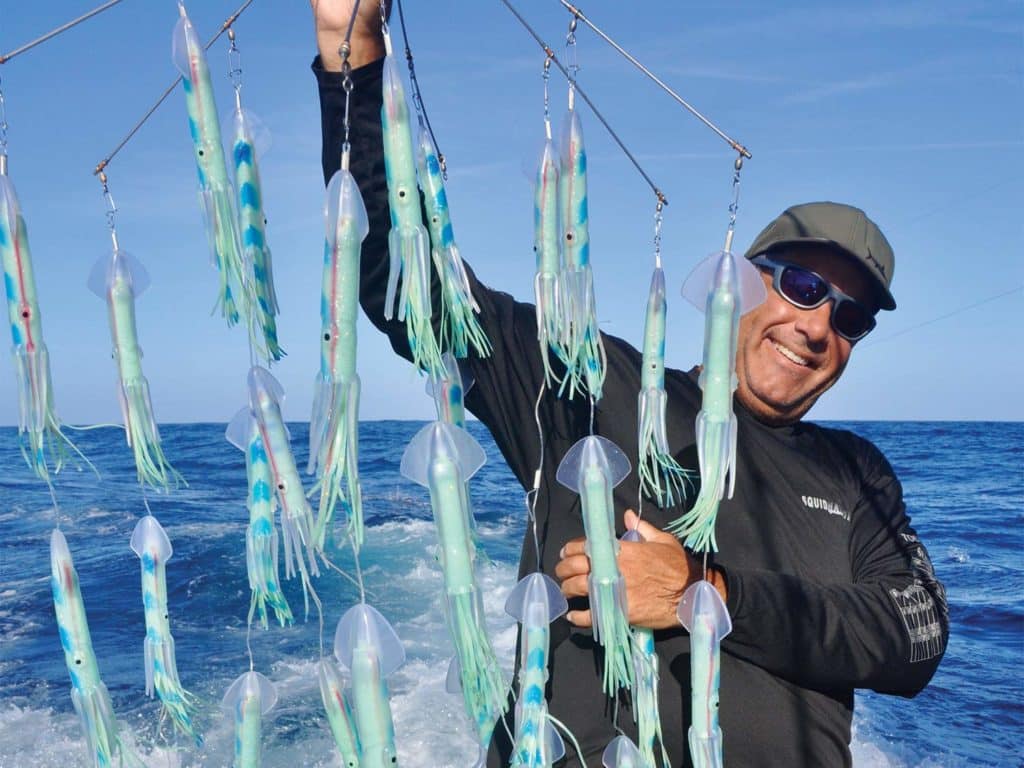
Fishing throughout that first day was slow. It appeared that the overnight arrival of the swell had resulted in a mixing of the warmer layer of water at the surface with cooler water from deeper down. Throughout that first morning, the water temperature remained chilly. We did briefly raise a couple of whites, but they never really showed any interest in our baits and soon faded away. Finally, by midafternoon, the warming effect of a hot African sun had worked its magic, and the surface temperature hit the mark.
I was beginning to think that we were going to get skunked when excited cries from the flybridge alerted everyone that we had raised a fish. I spotted a lively white darting from one teaser to the next, its rounded pectoral fins lit up and glowing a brilliant lilac blue. Within seconds, our guest angler Kim Hermanowski had pitched a dead bait, and the fish absolutely crushed it. Everything went perfectly to plan; barely 10 minutes later, we released our first white of the trip.
Radio chatter throughout the day had confirmed that the other boats fishing in our vicinity had all experienced a similarly slow day. Back at the dock, we learned that the crew of Sahyoun’s other boat, Double Strike, had released six whites from 11 bites. They had been fishing an area much farther south than we were, too far away to contact us by radio, where they had found more-favorable surface temperatures throughout the day.
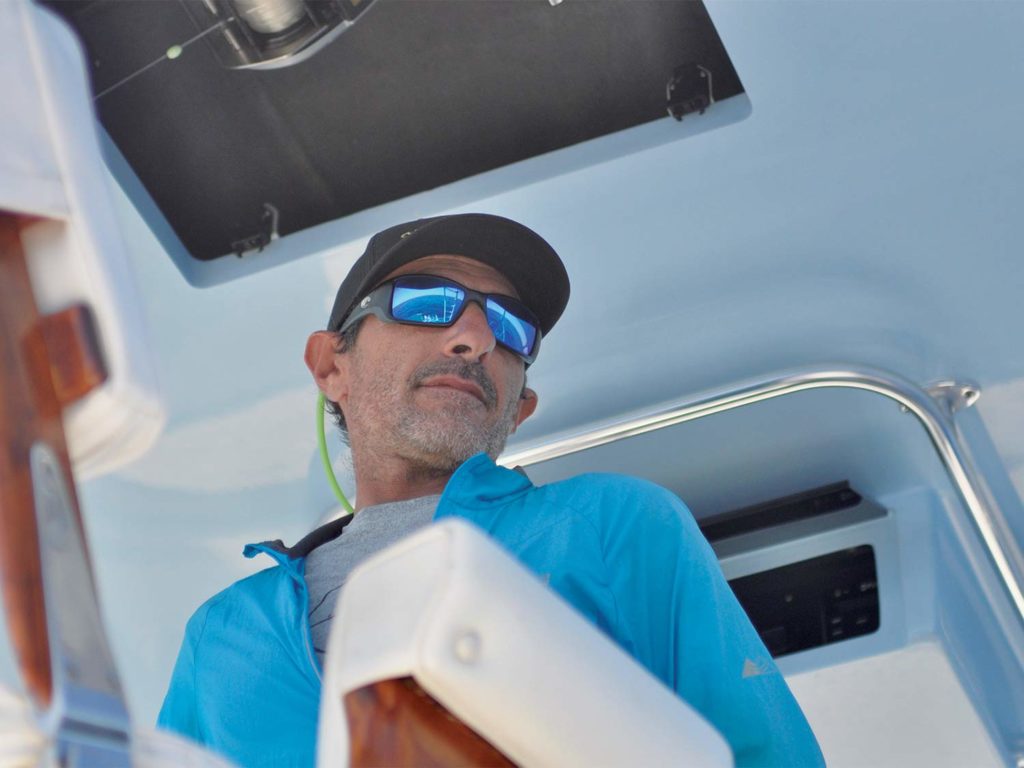
A New Day Dawns
Even as we headed out past the tankers, it was clear that Canu was undecided as to exactly where to start fishing. As the Gamefisherman lifted its bow into the first swell, which if anything had increased overnight, he was visibly torn between heading to the area where Double Strike had scored the previous day and running back to the area we had fished—the area in which he clearly had so much confidence. His gut feeling was the latter option.
On the run out, the crew was treated to a master class in dredge and teaser construction and presentation by our second guest angler, Squidnation founder Bill Pino, who was on his second trip to Mohammedia and was field-testing some new gear. After a slow couple of hours, which once again we put down to a slightly less-than-ideal surface-water temperature, we started to raise a few fish. Eventually, Zac Smith, who had traveled to fish in Morocco with Pino and Hermanowski, had the opportunity to execute a textbook-perfect pitch and hooked up with a red-hot fish, which perfectly demonstrated just why whites have a reputation for putting on such a great show on light tackle. Smith’s was our only fish on Day Two, and when back at the dock, we learned that Double Strike had once again scored well.
Conditions the next morning were perfect. The swell had started to ease, and as we completed our morning chore of acquiring fresh live baits, confidence aboard One More was riding high. And sure enough, when we commenced trolling, it wasn’t long before the first white rushed our spread and succumbed to a pitched mackerel—and 10 minutes later, swam off, no doubt wondering what the hell just happened. Soon afterward, we hooked another fish, and when yet another white joined it to see what was going on, we had a double hookup and release.
We had a great day with plenty of action, releasing eight fish from perhaps a dozen bites. The average size of those fish was a healthy 75 pounds, with the biggest clearly going way over 100. As Moroccan marlin fishing goes, we had barely experienced an average day out on the water, which is why we were already discussing plans to return. It’s a truly unique fishery amid a fascinating North African setting.
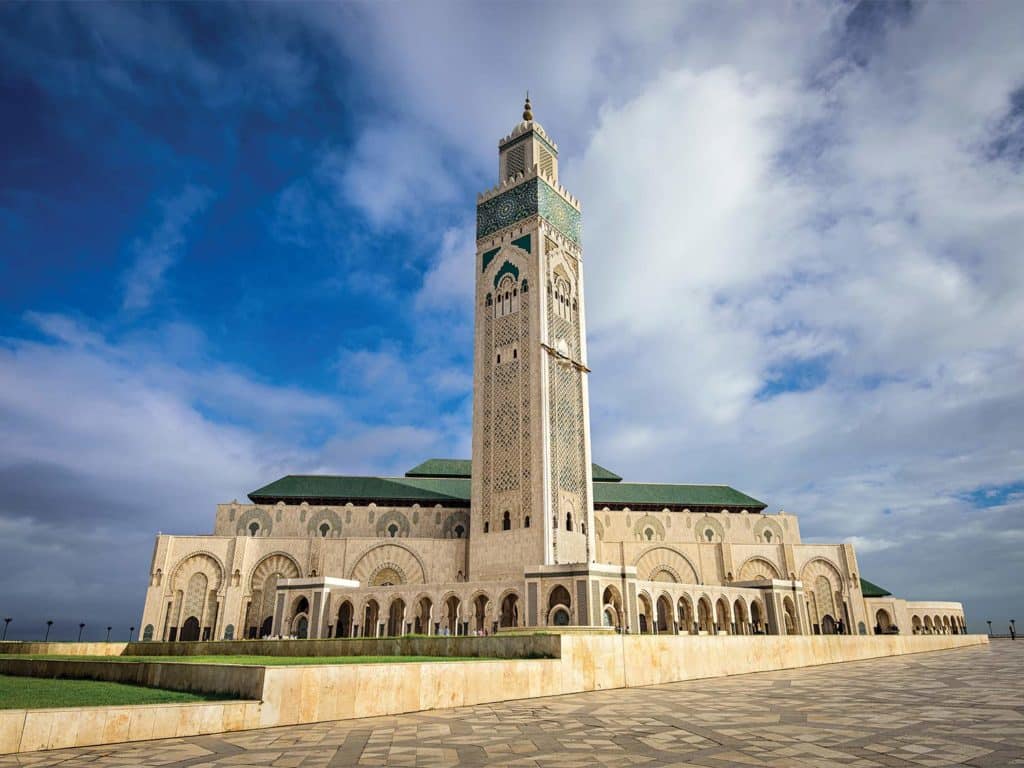
About Mohammedia
Morocco is a shining example of how communities from different backgrounds can live together in perfect harmony. In the center of this pleasant and well-laid-out town, you’ll find a Christian church located virtually alongside Islamic mosques. The atmosphere is relaxed and safe. Each morning, you are picked up at your hotel and driven to the port, and then returned at the end of the day. English is widely spoken everywhere, along with Arabic and French.
Having traveled extensively throughout Africa and the Arab world, I can say that Morocco is certainly one of the most welcoming countries I have visited. That said, of course, you should always check official government sources prior to booking any trip for the latest travel information and updates.
Direct flights into Casablanca are available from several US hubs. Daily flights, operated by various low-cost airlines, are also available from most European capital cities. Flight time from London is under three hours, and it’s barely an hour from Spain and other Mediterranean countries. Given the current strength of the US dollar, now is the perfect time to plan a trip to Morocco. Aside from the great fishing, the country is rich in world-famous tourist attractions and is well worth a visit.
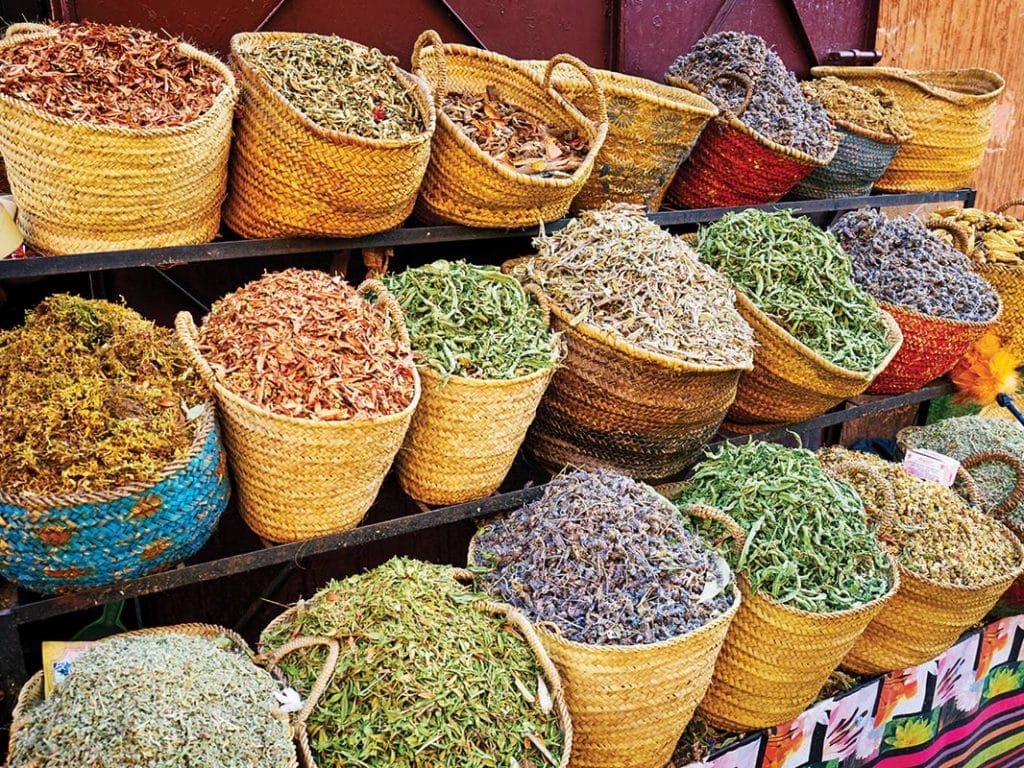
In Mohammedia, you’ll find a variety of good hotels. I stayed at the Ibis, while my three American friends stayed at the Novotel. Both offer excellent value for the money, are perfectly located, and have their own bars and restaurants. For me, the big surprise was the variety and quality of dining options in town, which range from excellent street food to five-star restaurants. Be sure to sample either a lamb—or better still, a goat—tagine, which is just one of the incredibly flavorful local specialties you’ll find throughout Morocco.
One More Sport Fishing
Located 45 minutes north of Casablanca’s international airport, Mohammedia is the home of One More Sport Fishing, with two boats: a 40-foot Gamefisherman and a 30-foot Grady-White Canyon.
Both boats have experienced crews and are fully equipped with a comprehensive selection of high-quality tackle in various line classes. Targeting line-class records, especially on fly, is not only a specialty, but it’s a passion of these crews as well.
For more information, contact Laurent Sahyoun via email, [email protected], or Capt. Marco Canu, [email protected].




